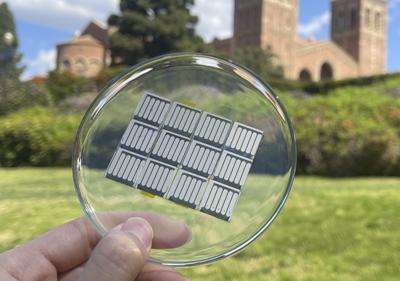Researchers at the UCLA Samueli School of Engineering, along with colleagues from five other universities around the world, have discovered a major reason why perovskite solar cells degrade in sunlight, causing their performance to suffer over time.

The team demonstrated a simple manufacturing adjustment to fix the cause of the degradation, addressing one of the biggest hurdles toward the commercialization of the perovskite-based solar cell technology.
A common surface treatment used to remove solar cell defects involves depositing a layer of organic ions that makes the surface too negatively charged. The UCLA-led team found that while the treatment is intended to improve energy-conversion efficiency during the fabrication process of perovskite solar cells, it also unintentionally creates a more electron-rich surface ' a potential trap for energy-carrying electrons.
This condition destabilizes the orderly arrangement of atoms, and over time, the perovskite solar cells become increasingly less efficient, ultimately making them unattractive for commercialization.
In light of this new discovery, the researchers found a way to address the cells' long-term degradation by pairing the positively charged ions with negatively charged ones for surface treatments. The switch enables the surface to be more electron-neutral and stable, while preserving the integrity of the defect-prevention surface treatments.
The team tested the endurance of their solar cells in a lab under accelerated aging conditions and 24/7 illumination designed to mimic sunlight. The cells managed to retain 87% of their original sunlight-to-electricity conversion performance for more than 2,000 hours. For comparison, solar cells manufactured without the fix dropped to 65% of their original performance after testing over the same time and conditions.
'Our perovskite solar cells are among the most stable in efficiency reported to date,' Tan said. 'At the same time, we've also laid new foundational knowledge, on which the community can further develop and refine our versatile technique to design even more stable perovskite solar cells.'